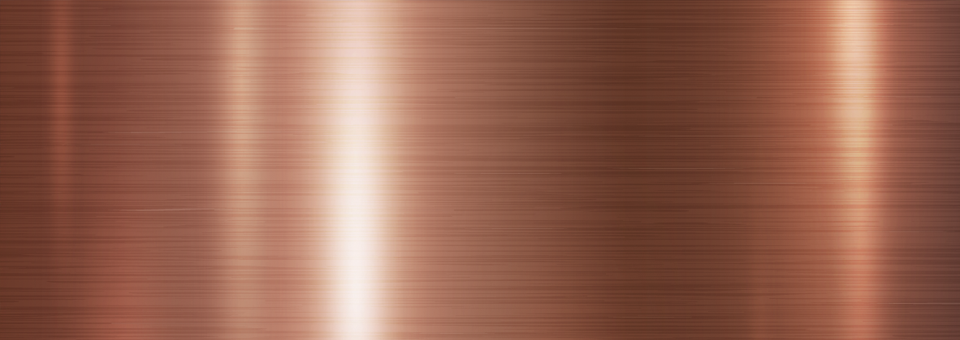
Copper was one of the “secret” ingredients used by well-known beauties of the ancient world… including Cleopatra and Nefertiti.
According to decoded hieroglyphics, these legendary Egyptian queens used finely ground copper in their lotions, creams and other skincare concoctions. They didn’t know how it worked. They just knew it did.
Copper was also considered to be a symbol of everlasting life in ancient Egypt. And it supposedly gave supernatural powers to those who wore it…
Now, eternal life is a bit of a stretch. But copper does provide perhaps the next best thing — it can prolong your skin’s everlasting youth.
The beauties of the ancient world didn’t know how copper worked to rejuvenate their complexion. They just knew it did.
Today, we know that this “precious” metal activates many enzymes in your connective tissue. This, in turn, increases the production of collagen.
You already know that collagen is the main protein in your skin. It forms a kind of latticework or scaffolding as the basis of your skin’s structure. When you have healthy collagen, you have taunt, smooth and toned skin.
Unfortunately, collagen starts breaking down in your 20s. And the older you get the less collagen you produce.
But studies show that copper peptide promotes the production of collagen in your skin cells.
In a recent study, researchers applied a copper peptide to the skin of 71 women with mild to advanced signs of photoaging. After 12 weeks, collagen production improved in an amazing 70% of participants.1
By the end of the study, they all showed increased skin density, improved clarity and a reduction in fine lines and wrinkles.
But that’s not all copper can do for your skin. In addition to regenerating new collagen, copper has been found to:
- Increase elastin in skin2
- Reduce wrinkles by increasing production of your natural water-holding hyaluronic acid3
- Activate antioxidants that protect against oxidative damage and environmental toxins4
- Repair damage to the skin and reduce scarring5
- Increase blood vessel circulation to heal and regenerate skin6
- Promote stem cell production in the basal epidermal cells7
Revive and Refresh Your Skin With Copper
Your body does not produce copper naturally, so you must add it to your body from external sources. Here are three ways to do that:
- Eat foods high in copper. This essential mineral is found in a variety of foods. High-copper foods include oysters, nuts and seeds, shiitake mushrooms, lobster, leafy greens, grass-fed liver, avocados and dark chocolate. You can also introduce copper to your body by drinking water from copper vessels. You can also supplement. I recommend 2 mg per day.
- Sleep on copper-infused pillowcases. Copper pillowslips are imbedded with microscopic copper oxide particles. These are absorbed by the skin while you sleep. Researchers at Hebrew University of Jerusalem conducted several double-blind trials. After one month of sleeping on the pillowcases, study participants saw a significant reduction in wrinkles and fine lines.8
- Choose a skincare product that contains copper peptides. Look for a skincare product that includes Copper Ferment CU complex. I call these peptides nature’s Botox. I suggest using once in the morning and again before bed.
To Your Good Health,

Al Sears, MD, CNS
References
1. Pickart L and Margolina A. “Regenerative and protective actions of the GHK-Cu peptide in the light of the new gene data.” Int J Mol Sci. 2018; 19(7):1987.
2. Mahoney MG, et al. “Extracellular matrix in cutaneous ageing: The effects of 0.1% copper-zinc malonate-containing cream on elastin biosynthesis.” Exp Dermatol. 2009;18(3):205-211.
3. Pickart L, et al. “GHK peptide as a natural modulator of multiple cellular pathways in skin regeneration.” Biomed Res Int. 2015;2015:648108.
4. Pickart L, et al. GHK-Cu may prevent oxidative stress in skin by regulating copper and modifying expression of numerous antioxidant genes.” Cosmetics. 2015;(2):236-247.
5. Coger V, et al. “Tissue concentrations of zinc, iron, copper, and magnesium during the phases of full thickness wound healing in a rodent model.” Biol Trace Elem Res. 2019;(191):167–176.
6. Borkow G. “Using copper to improve the well-boing of skin.” Curr Chem Biol. 2014;8(2):89-102.
7. Kang YA, et al. “Copper–GHK increases integrin expression and p63 positivity by keratinocytes.” Arch Dermatol Res. 2009;301(4):301-306.
8. Borkow G. “Improvement of facial skin characteristics using copper oxide containing pillowcases: A double‐blind, placebo‐controlled, parallel, randomized study.” Int J Cosmet Sci. 2009;31(6):437-443.








